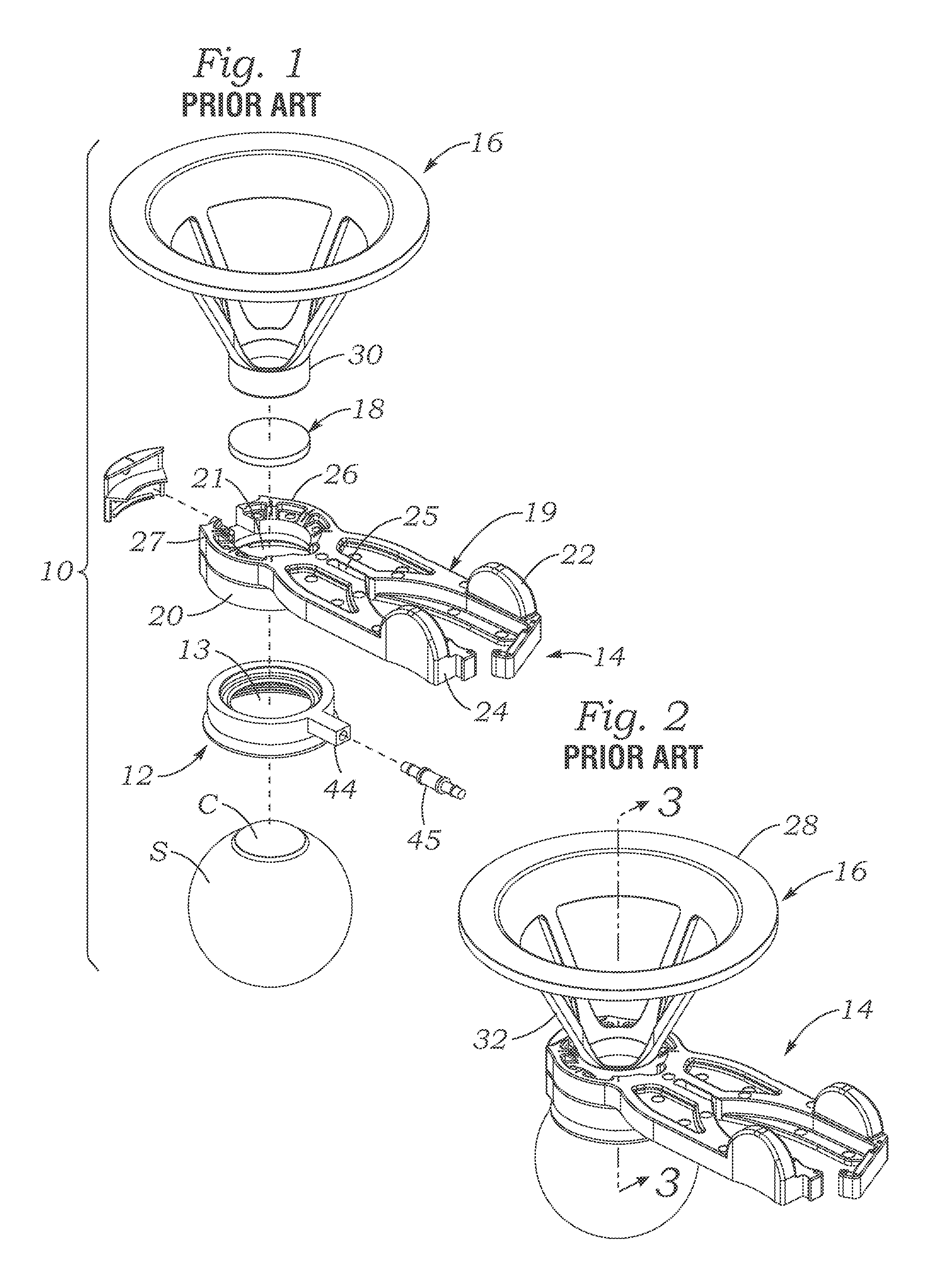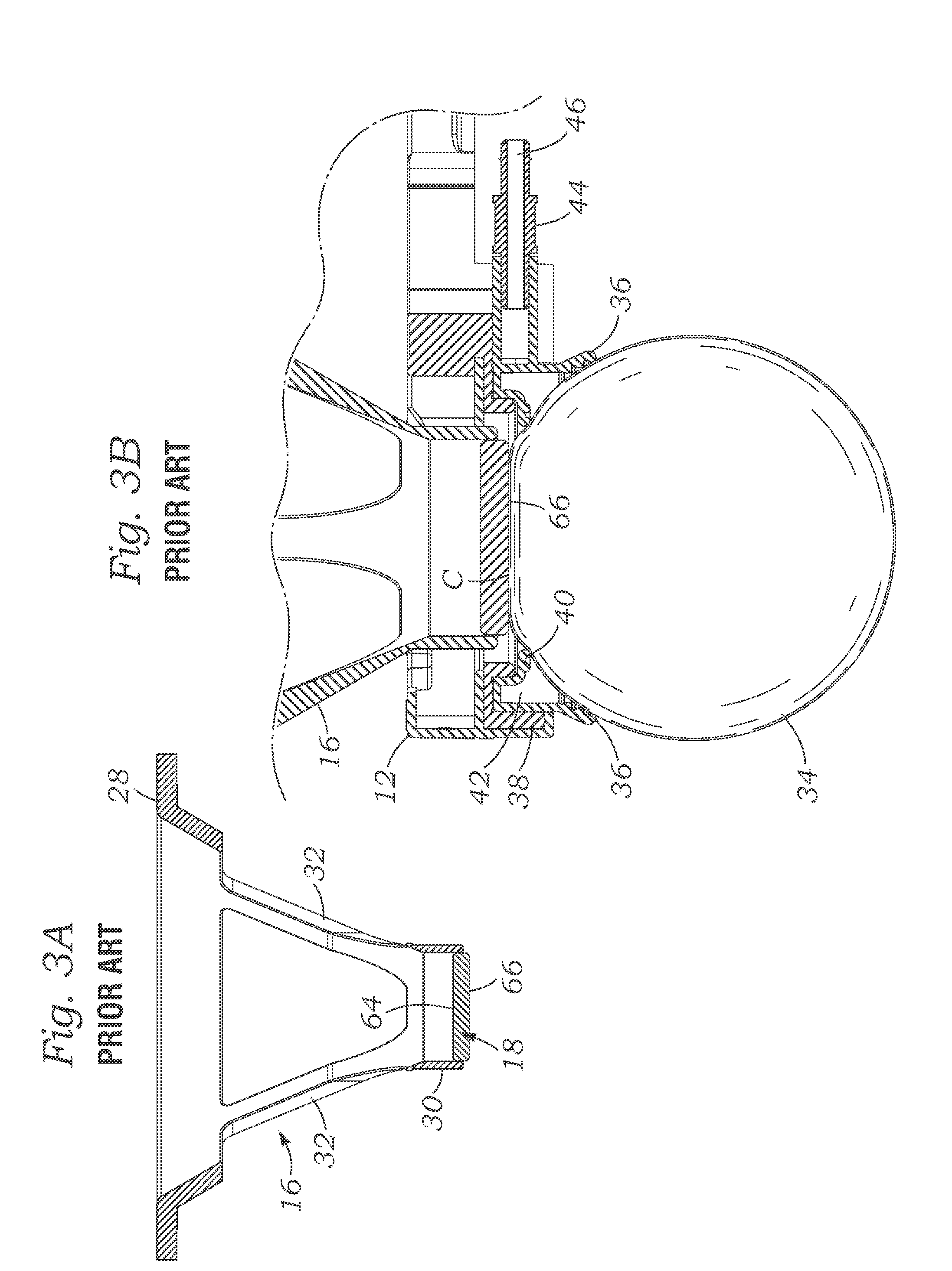Hybrid ophthalmic interface apparatus
a technology of ophthalmic surgery and interface device, which is applied in the field of ophthalmic laser surgery, can solve the problems of significant mechanical limitations of the use of such systems for ophthalmic surgical procedures, damage to non-renewable tissue within the eye, and the patient bears a significant burden of minimizing relative motion, and achieves the effect of sufficient flexibility for deformation
- Summary
- Abstract
- Description
- Claims
- Application Information
AI Technical Summary
Benefits of technology
Problems solved by technology
Method used
Image
Examples
first embodiment
[0055]In a first embodiment, a patient interface100 seen in FIGS. 4-5 utilizes a compliant liquid-filled bladder 102 attached to the lower apex ring 104 of a lens cone 106. The bladder 102 directly contacts the eye 108, as seen in FIG. 5, and provides some stability thereto during ophthalmic laser surgery. As seen in FIG. 4A, the bladder 102 is desirably made from a thin, compliant plastic or silicone material having an upper tubular collar 110 and a lower dome-shaped contact portion 112. The collar 110 is held on the exterior of the apex ring 104, such as by adhesives or mechanical clamping (not shown) creating a sealed volume above the bladder and below a lens cone glass surface 114.
[0056]The volume within the bladder 102 is partially filled with a transparent fluid having an optical refractive index (RI) that is close to or equal to the RI of the cornea. This RI matching reduces optical distortion experienced by the laser beam when passing through the bladder / cornea interface. In...
second embodiment
[0064]FIGS. 6-10 illustrate a patient interface for ophthalmic laser surgery including a modified receiver portion 150 and attachment ring 152. The receiver portion 150 is relatively rigid, while the attachment ring 152 is soft and flexible. The attachment ring 152 is similar to the attachment ring 12 described above for the prior art system 10 and provides a vacuum seal against the eye.
[0065]As seen in the exploded view of FIG. 6 and also with reference to the sectional view in FIG. 8, the receiver portion 150 includes an upper housing 160 having a downwardly opening channel 162 that receives therein an annular portion 164 of the attachment ring 152. The ring 152 includes an outer skirt 166 and an inner ring member 168, with an annular vacuum manifold 170 therebetween. The manifold 170 opens to passages that lead to a vacuum port 172. As seen in FIG. 10, lowering the attachment ring 152 to the surface of the eye causes the skirt 166 and ring member 162 form a seal around the annula...
PUM
 Login to View More
Login to View More Abstract
Description
Claims
Application Information
 Login to View More
Login to View More - R&D
- Intellectual Property
- Life Sciences
- Materials
- Tech Scout
- Unparalleled Data Quality
- Higher Quality Content
- 60% Fewer Hallucinations
Browse by: Latest US Patents, China's latest patents, Technical Efficacy Thesaurus, Application Domain, Technology Topic, Popular Technical Reports.
© 2025 PatSnap. All rights reserved.Legal|Privacy policy|Modern Slavery Act Transparency Statement|Sitemap|About US| Contact US: help@patsnap.com



